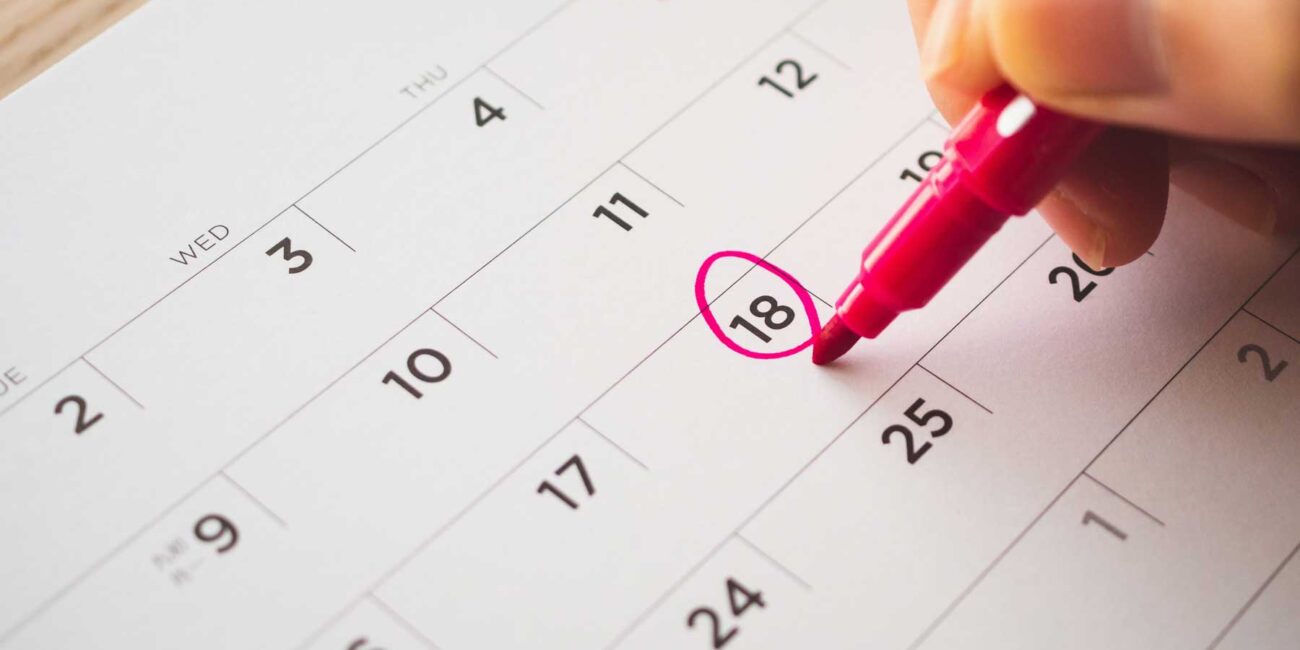For auto repair shops, spring is a hectic season with ample opportunity for increasing revenue. As people prepare their vehicles for the summer and long road trips, business is about to ramp up. But to make the most of this peak season, it’s ideal to increase the number of scheduled visits on the books.
When you can schedule customer visits in advance, it’s easier to meet customer expectations and keep repairs on schedule. Not only that, but as people are preparing to bring their vehicle into the shop, you want to ensure that you’re capturing their attention rather than allowing your competitors a chance to snag their business.
The following steps will help you boost your scheduled visits in the season ahead:
Step 1: Begin with an Analysis of Your Current Conversion Path
While specials and promotions influence many price-conscious shoppers, the reality is that no matter how great a deal is, if a customer can’t easily and quickly convert, you’ll lose their sale. Before you begin investing money into a marketing campaign, take the time to analyze your current conversion path.
If a customer lands on your website via an ad, what path do they have to take to schedule a service with your business? Ideally, there should be multiple options for a customer to convert, and each one should be designed with the least resistance possible.
For example, if a customer clicks on a promotion for a discounted oil change, they should immediately be dropped into a specialized landing page that reinforces the same deal. From here, they should have the ability to use an online scheduling tool to quickly schedule their service, with their discount automatically applied, or they should be offered a few methods for contacting your auto shop.
If it’s hard for a customer to reach your shop, and you aren’t taking advantage of a digital scheduling tool, start here. There’s no point in pouring money into a marketing campaign if the ultimate path to conversion is muddied.
Step 2: Put Together Lists of Segmented Customers
When running a spring marketing campaign, you want to be strategic in your spend. Take the time to put together segmented customer lists that you will target with key promotions.
For example, one list might contain previous customers who visited your shop for routine maintenance. This list could be targeted with a follow-up promotion, reminding this segment of their vehicle’s upcoming maintenance needs.
You can also create lists of lookalike audiences via Facebook and Google ad managers. This will allow you to utilize your existing customer list to target potential customers that share similarities, such as demographic information and physical locations.

Step 3: Use a Multi-Channel Marketing Approach
Once you have your customer lists set up, you can put together a marketing campaign. For auto shops, a marketing campaign should utilize multiple channels to target carefully designed lists.
Examples include:
- Google Ads: Google offers numerous ad options, each of which provides its own set of benefits. Search and Display ads are two of the best choices for auto shop marketing. Search ads allow you to showcase a text ad on Google’s search results pages. These are based on a set of keywords you choose and are an excellent choice when your competition is outranking you organically for critical keywords in your local area. Display ads are graphic ads that follow users across the internet. These make it easy to retarget your customers across the websites they use. They are also a good pick for auto shops looking to build their brand awareness.
- Social media ads: Rounding out your digital ad campaigns, be sure to utilize social media to your advantage. Facebook and Instagram are two good channels to start with as they offer a wide reach. You can set up campaigns to run in conjunction with your Google ad campaigns, ensuring the best spend of your dollar.
- Email: By 2020, the number of email users across the globe reached four billion, on track to reach 4.6 billion by 2025. When you back your email marketing with good data (e.g., up-to-date contact info), you can tap into a wealth of opportunities. Email marketing still offers one of the highest average return on investment (ROI) rates, with most companies earning an ROI of $45 for every ad dollar spent.
- SMS: If you have a customer base that has opted in to receive text messages from your shop, be sure to employ this channel. With an open rate of 98%, SMS allows you to send an offer or maintenance reminder directly to your customers’ phones.
- Direct mail: While digital marketing is quickly taking center stage as the most effective marketing strategy, you can still use direct mail to target customers. Direct mail coupons and special offers for auto repair shops are especially effective.

Step 4: Send Out Reminders
Getting your promotion or ad in front of your audience once isn’t enough, as most people won’t decide to schedule services right away.
Often, this is simply due to timing. A customer may have read your text in the middle of a busy workday or clicked on your oil change ad while searching for a dinner recipe.
This is where follow-up is key. Reminders and retargeting the same audience can help you increase your total conversions.
A multi-channel approach can become highly effective when it comes to follow-up. From the list above, put together a strategy of how you will reach out multiple times to the same audience.
For example, you might start with social media ads. A few days later, you may trigger a follow-up email for customers that clicked on your initial ad. After that, for those who still haven’t converted, you might use Google Display ads to market to that customer across the internet.
Bonus Tip:
If you’re retargeting the same customer list multiple times and you’re still seeing a low conversion rate, it might be time to analyze two key things:
- Your customer data: When was the last time you cleaned your data? Outdated contact information and poorly built customer lists can lead to low conversion rates.
- Your call to action: If customers aren’t converting, it could be due to your ad copy. Does your ad contain a clear call to action that’s easy to follow?
Step 5: Create a Positive Experience
Once you have converted a customer into a scheduled visit, your job is not done. Booking out your spring calendar is the initial goal, but ultimately, you want to build brand loyalty with these customers. Ideally, after their visit this spring, these customers will look to book with your auto repair shop for all their future vehicle maintenance needs.
Take the time to analyze your in-person experience. When a customer shows up for their scheduled visit, they should be greeted by a friendly staff member. Their visit information should be promptly pulled up, and they should be provided with an accurate wait time.
At the end of the visit, your staff should gather valuable information to funnel into future marketing campaigns. During checkout, make sure to double-check the accuracy of existing contact information, provide your customer the opportunity to opt-in for SMS marketing, and ensure that they are leaving satisfied with their visit.
Step 6: Put Together a Follow-Up Campaign
Spring can be an incredibly busy time of year for your auto repair shop. With large numbers of new and existing customers visiting your shop, you have the chance to set yourself up for success for your less busy seasons. These follow-up campaigns can take a few different approaches.
A Thank You
Consider sending out a follow-up email thanking your customers for their recent visit. In this email, you can ask your customer about their satisfaction with your shop. For those who had a poor experience, use a link to contact your team directly, allowing you to remedy any complaints one-on-one. For those who indicate they had a positive experience, direct them to your Google business listing to leave a review. You can also provide them with links to follow your business on social media.
A Reminder
For those who visited your shop for a routine service — such as an oil change — set up a marketing campaign that will automatically trigger a reminder several weeks before they’re due for their next service. This helps keep you top of mind and allows you to provide a more personalized offer down the road.
A Phone Call or Text
If staffing allows, you can even follow up directly via phone or text with customers who visited your shop for important repairs. A quick call asking how things are going and if their vehicle is giving them any further issues can help build long-term trust between you and your clients.
An Inquiry for Those Who No-Showed
When you go back through your calendar, look for any customers that booked an appointment but didn’t show up. Create a list of these customers and reach back out. The following is an example of what your correspondence might look like:
Dear (Customer Name),
We were sorry we didn’t see you on (Service Date). Our team is sending you all the best! If you still need to have your car serviced, please don’t hesitate to reach back out. We will be glad to reschedule your appointment at your earliest convenience. Feel free to schedule your new appointment online (link to online scheduling tool) or reply to this email.
Reply to Reviews
Once your busy spring rush has ended, take time to go through any new reviews you received online. For positive reviews, leave a quick note thanking your customer for their visit and feedback. If you have the time, add a personal note about their visit. If your contact management platform allows for it, attach their review to your customer notes.
For those who leave a negative review, do two important things:
- Look for trends in your negative reviews. Rather than being upset about the feedback, see if you notice any valid complaints that surface. You might need to focus on retraining staff or improving your services.
- Respond to each negative review. When you receive a negative review — whether it’s valid or not — write a quick, succinct reply. Simply thank the customer for their feedback and ask them to reach out to a manager (providing them with a contact method to do so). Never get into an argument with a customer via a review platform. This can damage your brand image for future customers. Taking the conversation offline will ensure that your team looks professional.
Increase Visits with the Help of Our Team
This spring, your auto shop has the chance to tap into a burgeoning market of vehicle owners that need repairs and maintenance. Take the lead in your local market by boosting the number of scheduled visits over the next few months. At J&L Marketing, we can help you put together a strategic plan for reaching both new and existing customers. We’ll help you make this spring profitable while also building a marketing base for future campaigns. Contact our team for a consultation.



